How Moebius revolutionised comic art
This archive interview looks at the artist that inspired Star Wars, reinvented French comics, and pioneered surreal illustration.
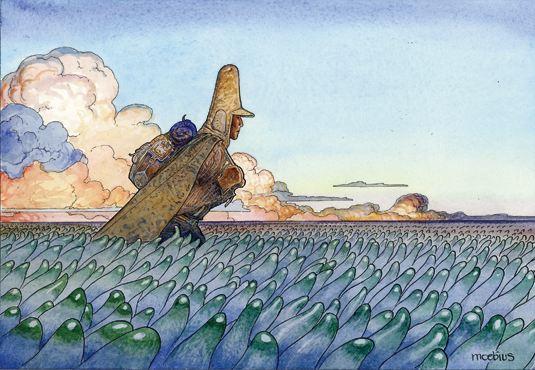
When ImagineFX magazine spoke to the art legend Moebius in 2010, a year before his death, he looked back at a career of innovation and constant creativity. Here's the interview as it was published on 14 December 2010.
Moebius, real name Jean Giraud, isn't the man you'd think he'd be. He's an enigma, a legend in France who's always wanted to be loved abroad for his American comics. He's also humble, despite a 50-year career that's seen his art anchored at the heart of modern sci-fi and fantasy.
Directly and indirectly, he's influenced Hollywood's greatest film-makers, including George Lucas and Ridley Scott. At the age of 22 he pioneered adult graphic novels, taking comics in a new, metaphysical direction.
When questioned about his venture from the world of mainstream comic art to that of surreal, often abstract and fantastical illustration, the artist offers a practical observation: "The possibilities as a professional illustrator are very small. Sometimes I prefer to escape and just do my own thing – it's more exciting."

In 1963, as a young man, Jean began working on the Western comic strip Blueberry with Jean-Michel Charlier, the director of French publisher Pilote. Blueberry was a visually realistic and authentic cowboy adventure.
It was also an instant hit with readers. Jean would sign off his art for the episodes as 'Gir'. He'd created his first pseudonym. Following the death of Jean-Michel Charlier, Jean carried on creating Blueberry comics (to date, he's written and illustrated 30 volumes).
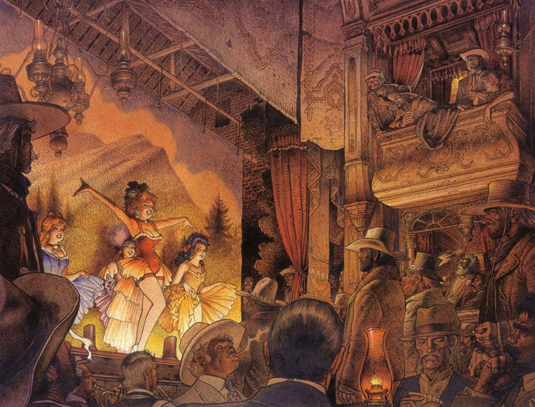
But the artist was yet to become himself. Gir had developed into Jean's signature for comics about adventures and Westerns. "I wanted to do something else," says the artist, "so I took a new signature for an artist's name: Moebius."
Daily design news, reviews, how-tos and more, as picked by the editors.
There's been a lot written about what the name means. It was reportedly inspired by the Möbius strip, the two ends of which fold together to create a one-sided loop. In an official biography, Jean has said, "Going from Giraud to Moebius, I twisted the strip; changed dimensions. I was the same and yet someone else.
I only spent 10 days on Alien and two months in LA at Disney for Tron
Moebius is the result of my duality." These days, he's more pragmatic, and almost embarrassed of his past statements: "When I chose the name I was very young: just 22."
"It was an idea with nothing special in mind, a nice name with a good sound and strange flavour. After a time it became interesting because there was a lot of background behind the name – mathematics behind the strip."
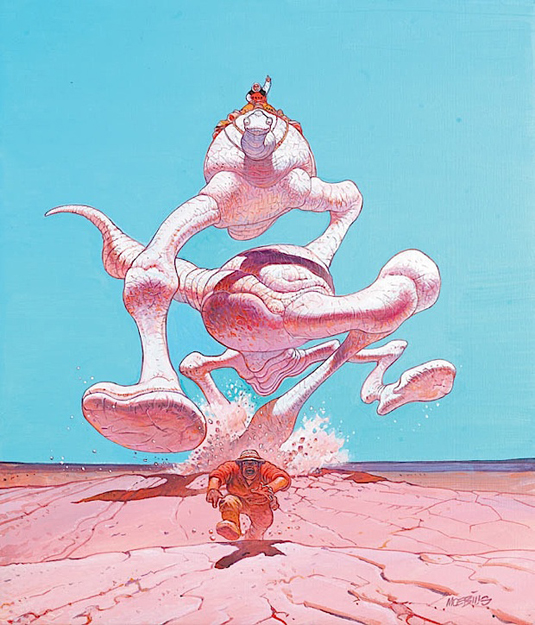
Origins aside, the product of Jean's alter ego took the comic world by storm. In 1973, as Moebius, he teamed up with Jean-Pierre Dionnet, Philippe Druillet and Bernard Farkas to create Les Humanoïdes Associés (United Humanoids). The outfit launched Métal Hurlant, later to become Heavy Metal magazine in the US.
As Gir, Jean's style was realistic, picking influences from film and photography and basing worlds on real places. But Moebius was able to explore new environments, developing a rich, detailed style that would bring alien civilisations to life through vivid, evolving imagery.
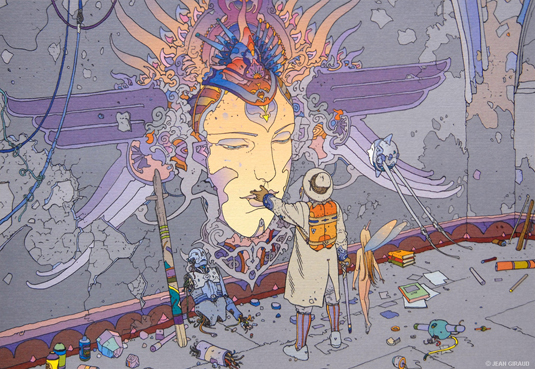
Métal Hurlant and its strips were spurred on by the growing underground press and comics movement in America in the 70s. "The idea was to be free, completely free, with no boundaries," remembers Jean. "Choosing the subjects, prose and style was free – my work was sci-fi and fantasy; I wanted to be provocative."
This sense of freedom manifested in pieces such as space and time odyssey Le Garage Hermétique (The Airtight Garage), The Long Tomorrow (which influenced Blade Runner) and the fantastical Arzach, a dialogue-free comic following a lone explorer and his winged alien creature.
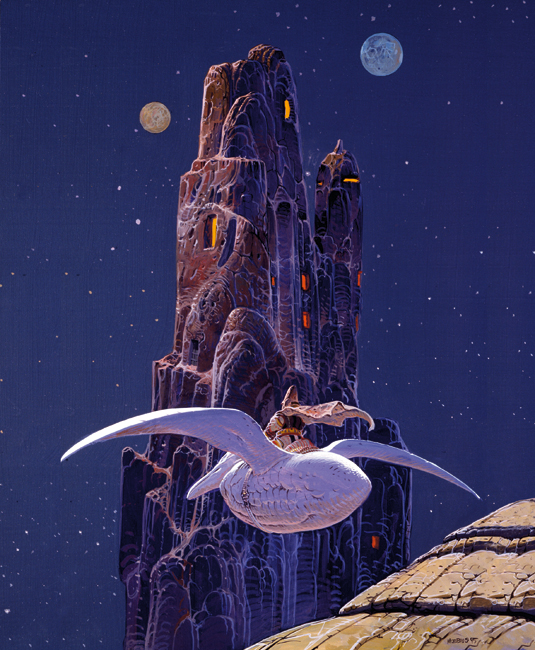
Arzach changed everything. Under the name Moebius, Jean was able to create a new language for comics. Freed from the constraints of a conventional script, the strip was a non-linear, expressive and surreal fantasy that asked the reader to form meaning from the images.
Next page: more on Moebius and his art...

Thank you for reading 5 articles this month* Join now for unlimited access
Enjoy your first month for just £1 / $1 / €1
*Read 5 free articles per month without a subscription

Join now for unlimited access
Try first month for just £1 / $1 / €1

The Creative Bloq team is made up of a group of art and design enthusiasts, and has changed and evolved since Creative Bloq began back in 2012. The current website team consists of eight full-time members of staff: Editor Georgia Coggan, Deputy Editor Rosie Hilder, Ecommerce Editor Beren Neale, Senior News Editor Daniel Piper, Editor, Digital Art and 3D Ian Dean, Tech Reviews Editor Erlingur Einarsson, Ecommerce Writer Beth Nicholls and Staff Writer Natalie Fear, as well as a roster of freelancers from around the world. The ImagineFX magazine team also pitch in, ensuring that content from leading digital art publication ImagineFX is represented on Creative Bloq.
